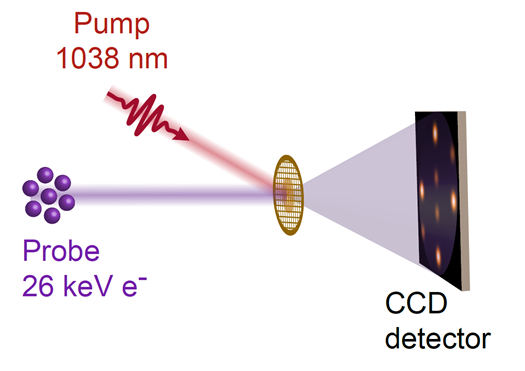
![]()
|
NEWS |
Techniques |
Materials |
Selected recent papers |
Pump Probe Spectroscopy
Pump probe spectroscopy is the simplest experimental technique used to study ultrafast electronic dynamics. In this technique, an ultrashort laser pulse is split into two portions; a stronger beam (pump) is used to excite the sample, generating a non-equilibrium state, and a weaker beam (probe) is used to monitor the pump-induced changes in the optical constants (such as reflectivity or transmission) of the sample. Measuring the changes in the optical constants as a function of time delay between the arrival of pump and probe pulses yields information about the relaxation of electronic states in the sample.
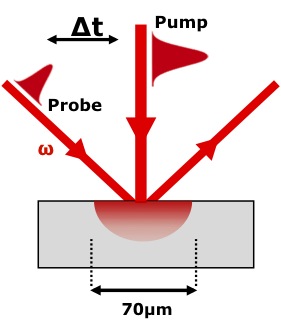
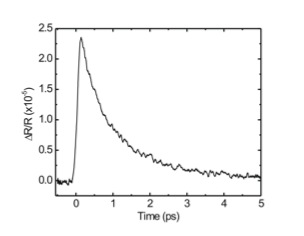
Transient Grating Spectroscopy
Pump probe spectroscopy described above is well suited for measuring the lifetime of electronic excitations with femtosecond time resolution. In order to measure propagation of these excitations in real space, we use transient grating spectroscopy. In this technique, a pair of femtosecond pulses is interfered on the sample to generate a sinusoidal intensity modulation, that in turn induces a density grating of photoexcitations. Because the index of refraction depends on the local excitation density, a periodic modulation of the index of refraction is formed. The period of this pattern in real space can be changed either by changing the wavelength of the laser or the angle between the two beams. An incident probe pulse on this pattern is therefore both reflected and diffracted. Measuring the time evolution of both the reflected and diffracted waves enables us to track the propagation of these excitations in real space.
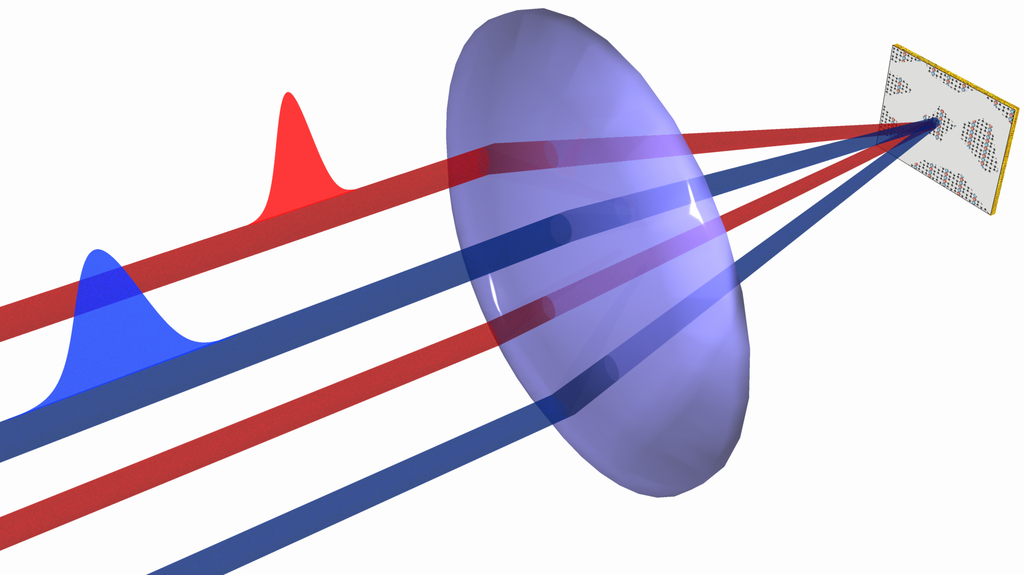

Circular Dichroism and Time-Resolved ARPES
Angle resolved photoemission spectroscopy (ARPES) is a powerful tool for mapping the electronic bandstructure of solids by measuring the energy and momentum of photoemitted electrons. In our lab we use UV laser pulses and a time-of-flight spectrometer (shown on the left), which simultaneously measures the photoemitted electron energy by its flight time, and momentum Kx and Ky using a 2D position-sensitive-detector. As a result, 3D intensity spectra I(E,Kx,Ky) (shown on the right for the topological insulator Bi2Se3) are obtained.
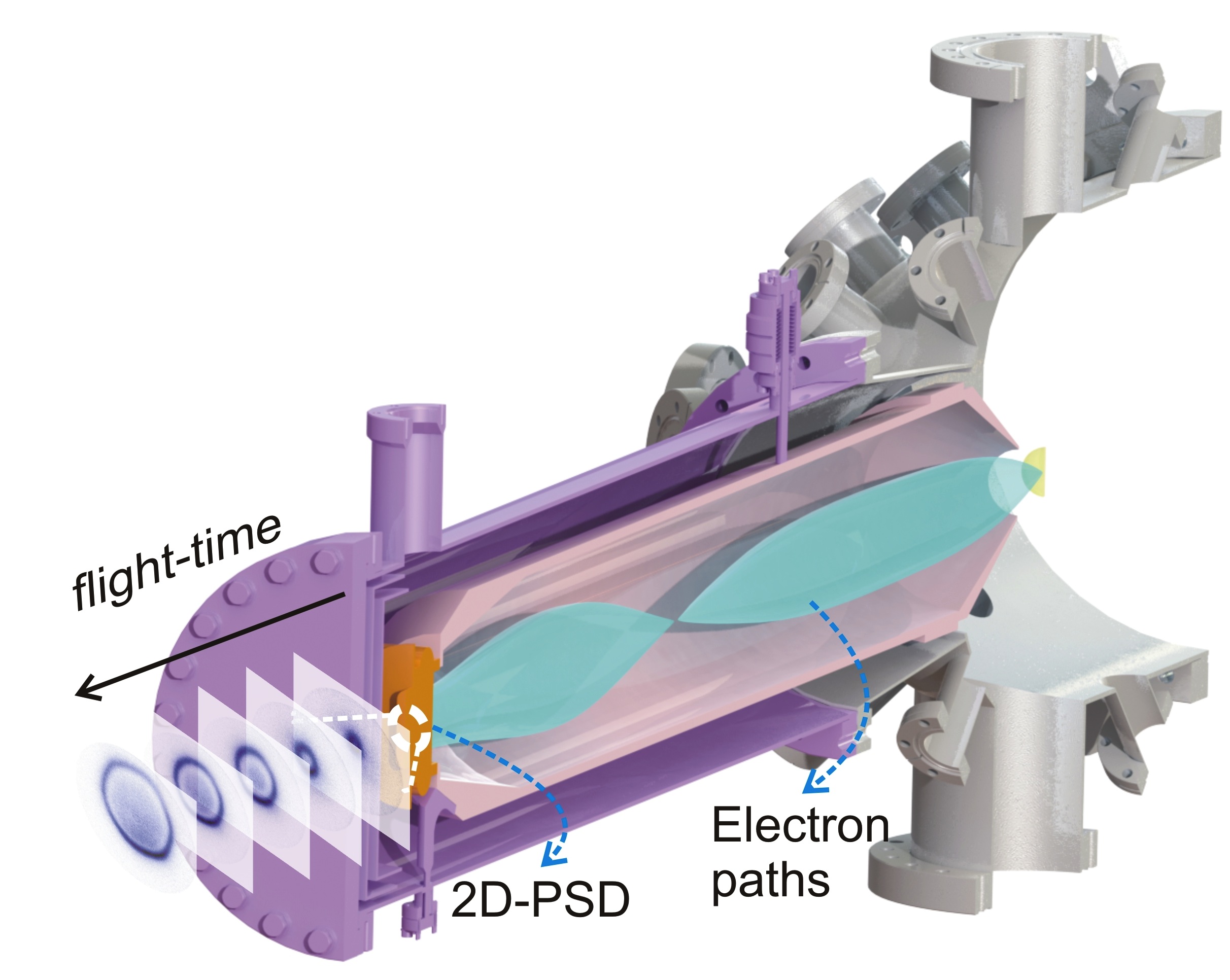
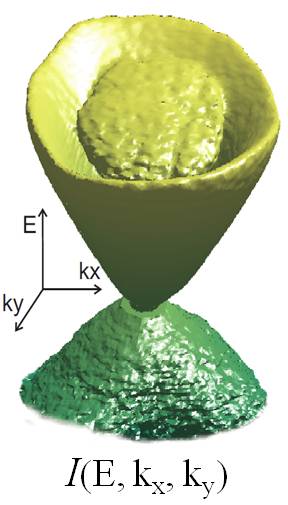
We can also look for circular dichroism, which is the difference in the ARPES intensity spectrum obtained with right- vs. left-circularly polarized light. In some materials, such as the topological insulator Bi2Se3, this can be a sensitive measure of the electron spin orientation in momentum space (below left). The ultrafast dynamics of electrons can also be resolved by performing ARPES in a pump-probe scheme. An 80 fs ultrafast laser pulse pumps the sample to initiate electronic excitation and the excited system is then probed by the delayed UV pulse that photoemits electrons for the ARPES measurement. By sweeping the delay time t between the two pulses while collecting the 3D intensity spectra I(E,Kx,Ky), we obtain a 3D movie of I(E,Kx,Ky,t) that captures electrons� dynamics in the solids on femtosecond time scale (below right for Bi2Se3).
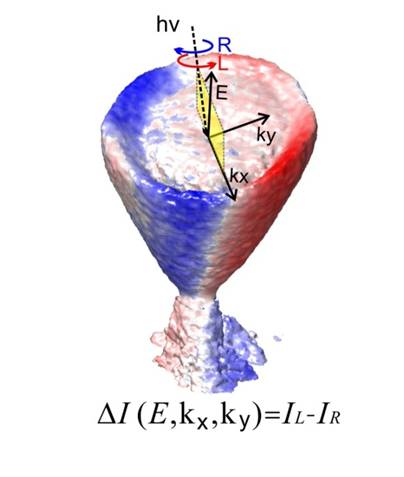
Second Harmonic Generation
A technique our lab has been researching to gain exclusive sensitivity to the surface of a material is optical second harmonic geneartion (SHG). In general, the electrical polarization of a material Pi(ω) has a dominant component linear in the driving optical field Ej(ω) as well as weaker components proportional to higher powers of Ej(ω), where ω is the optical frequency and the indices run through three spatial coordinates. Components that contain two powers of Ej(ω) are responsible for SHG. For electric dipole processes, the polarization Pi = χ(2)ijkEjEk is obtained from a third rank susceptibility tensor χ(2)ijk that vanishes under inversion symmetry. Therefore dipole induced SHG is forbidden in bulk crystals with inversion symmetry and is only allowed at surfaces or interfaces where inversion symmetry is necessarily broken. By measuring the reflected output as the sample is rotated about its surface normal axis, we obtain patterns like those shown below for Bi2Se3, which reveal the symmetry of the surface electronic polarizability.

The ultrafast pulsed nature of the laser light used to perform SHG naturally lends itself to the study of ultrafast dynamics on the surface of materials. In these types of experiment, a pulse of laser light (pump) is first impinged onto the sample in order to create a non-equilibrium electron distribution. A second time delayed pulse (probe) is then used to monitor the temporal evolution of the SHG signal (see below). The relaxation dynamics of the non-equilibrium distribution can be used to understand the microscopic energy loss mechanisms of the surface electrons.
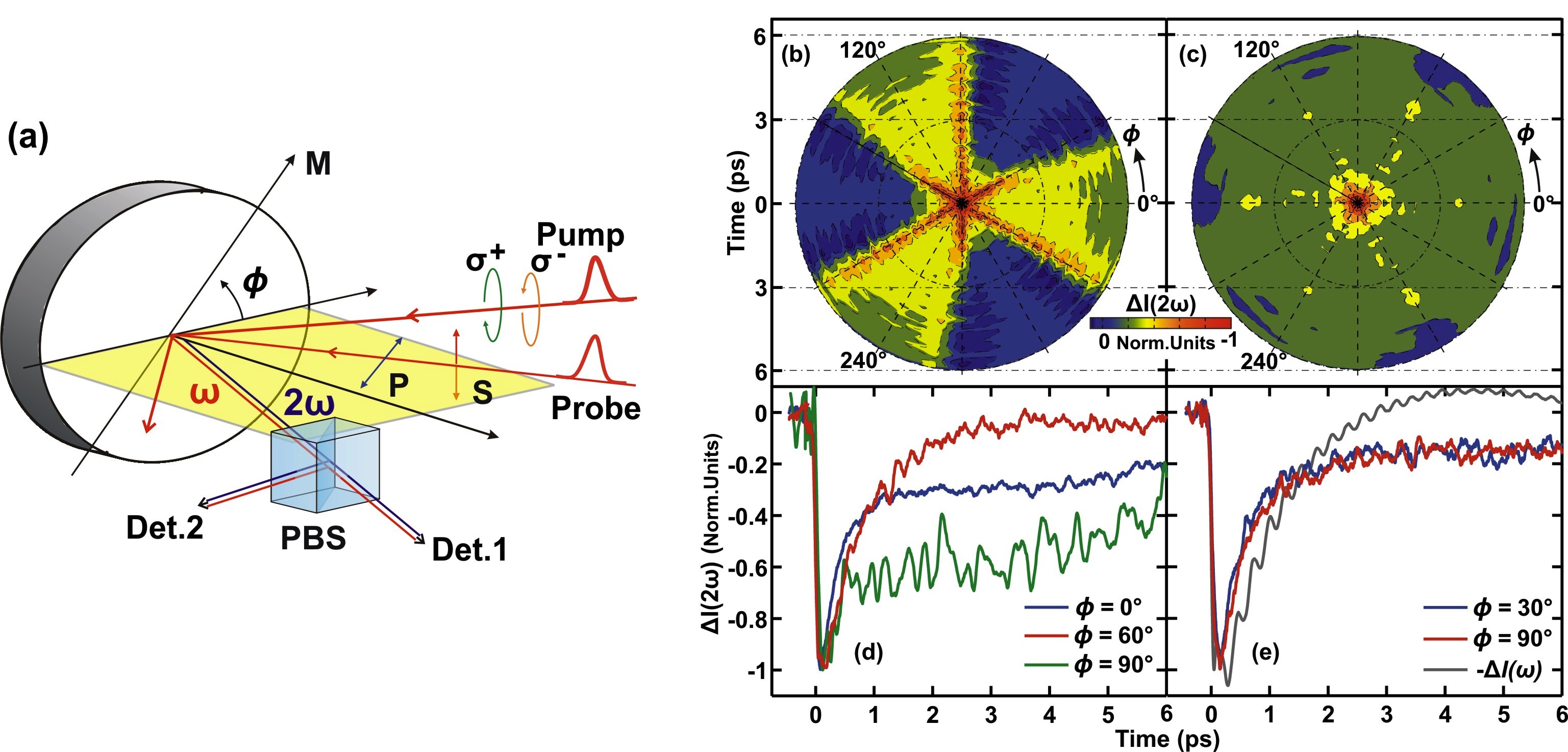
TeraHertz Time-Domain Spectroscopy
Terahertz Time-Domain Spectroscopy (THz-TDS) is an optical technique used to measure equilibrium and non-equilibrium far infrared material properties such as index of refraction and conductivity. A THz pulse is generated via optical rectification in a ZnTe crystal using a 100 fs near-infrared pulse. The THz pulse is then focused through a sample and subsequently detected in another ZnTe crystal via free space electro-optic detection. The measured signal is proportional to the electric field of the pulse, so the magnitude and phase are preserved, and the complex transmission coefficient can be extracted. From this, the full complex value of the material parameters can be extracted without the use of Kramers-Kronig relations.
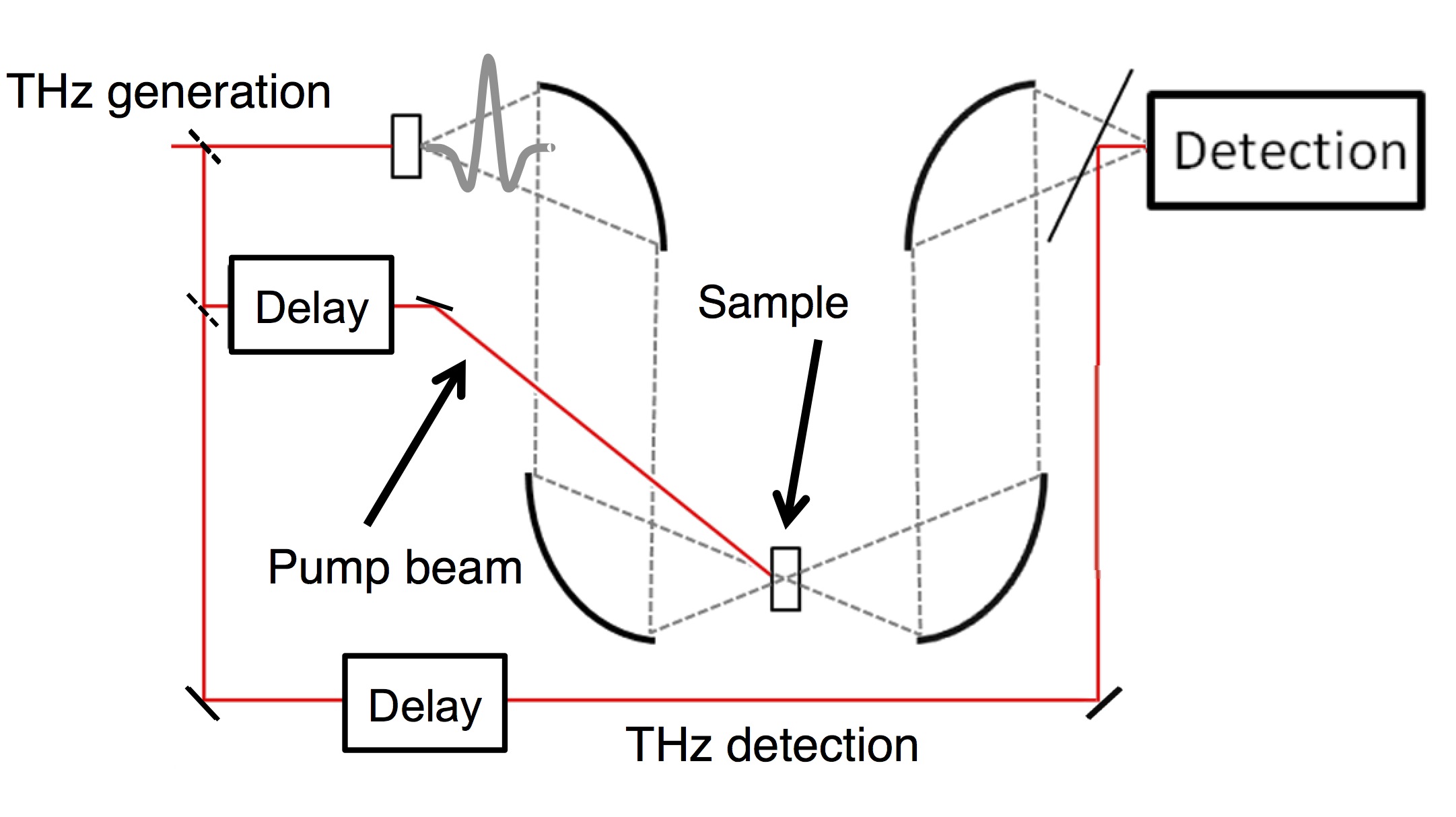
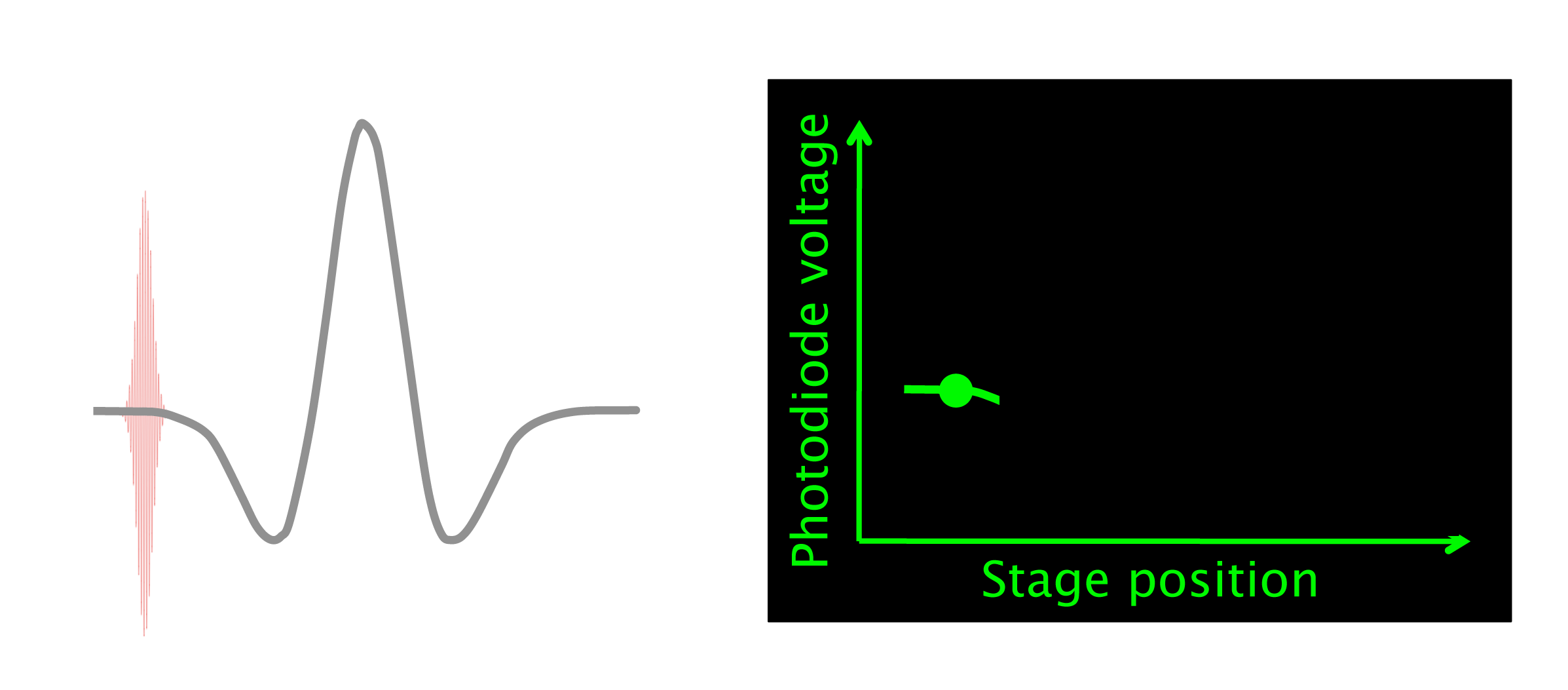
This can also be done after excitation by another 100 fs near-infrared pulse. By varying the time delay between the THz pulse and the excitation pulse, the non-equilibrium complex material parameters can be measured as a function of time, with resolution < 500 fs.
THz-TDS is best used to study systems in which the excitations of interest lie in the meV energy range, e.g., a superconductor with a small energy gap. The technique has been used to study a wide variety of systems, including Cooper pair and vortex dynamics in superconductors, carrier dynamics in semiconductors, metal-insulator phase transitions, and even metamaterials.
Ultrafast Electron Diffraction
Direct determination of structural dynamics requires the ability of measuring atomic motions with angstrom scale spatial resolution. Conventional ultrafast optical spectroscopy based on measuring transient changes in optical constants is sensitive to dynamics of electronic excitations but can provide only indirect information about structural dynamics. The spatial resolution in these techniques is also limited to micron scales due to diffraction limit.
Ultrafast electron diffraction (UED) can directly couple to structural dynamics and provide sub-angstrom spatial resolution together with sub-picosecond temporal resolution. The principle of UED is similar to pump probe spectroscopy. An ultrafast laser pulse is split into two; the first part of the laser pulse is directly focused on to the sample to create a non-equilibrium state. To probe the induced structural change, the second part is frequency tripled and focused on to a photocathode generating an ultrafast electron packet via photoelectric effect. These electrons are then accelerated through a high voltage (typically through 30 keV, de Broglie wavelength = 0.07 Å) and diffracted from the sample.
The relative arrival time of the probing electron packet and the initiating laser pulse at the sample can be changed by changing the relative optical path-lengths of the two laser beams. Recording the diffraction pattern of the electron packet as a function of this time delay provides both the equilibrium structure and a movie of the structural evolution with sub-Angstrom spatial resolution (reaching ~0.001 � level) and sub-picosecond temporal resolution.
© 2024 Nuh Gedik. All Rights Reserved
